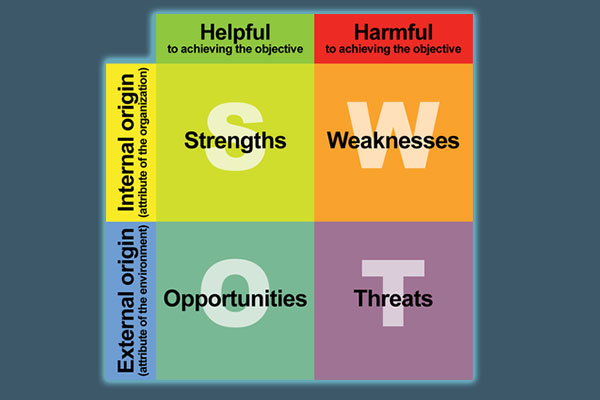
What is trade marketing? Popular trade marketing strategies

Trade marketing is a very specific form of marketing. It's not for the general public, but for businesses in your industry. This article looks at some of the most popular trade marketing strategies and tells you how they work.
Trade marketing is one of the oldest and primary methods of marketing. In trade marketing, the focus is on sales at point-of-sale and value-chain distribution. By marketing to retailers, you're creating demand for your product in the market before your consumers buy it. It's a well-established form of selling that both small and large businesses use to sell their products.
Have you ever got convinced by a local store owner to buy a particular brand of mouthwash when you wanted to buy a different brand? What could be the reason behind this? The seller must be getting more benefits from the seller of that particular brand than its competitors. Yes, this happens because of trade marketing.
Manufacturers are always working to provide products that consumers want. However, they have to compete with other manufacturers who are also trying to do the same thing. The end result is fierce competition and the availability of many similar products. As a result, the need arises for middlemen such as retailers, wholesalers, and distributors. These businessmen purchase items from manufacturers at discount prices and then sell them in the marketplace - where consumers can buy them at higher prices.
Marketers will often find that trade marketing is a unique field of marketing in which products are marketed to other businesses. Trade marketing is also known as B2B or business-to-business marketing. Marketers use trade marketing to sell their product to retailers, who then sell them to final consumers.
Manufacturers will offer lower prices to retailers and wholesalers to help promote their products. They also provide additional benefits and services, like money-back guarantees or bigger discounts, to encourage them to sell more of your product over your competitor's.
Pepsi is an excellent example of a brand that invests in trade marketing. No matter if you're in a big city or in a small rural area, you can find a bottle of Pepsi. There are many examples of brands who invest both large amounts of money on expensive marketing, and also invest in trade marketing too.
Take a look at the following article to learn all about trade marketing. You'll learn what it is, the best strategies for trade marketing, and its advantages and disadvantages.
What is trade marketing?
Trade marketing is a strategy where you market your products to businesses like retailers, wholesalers, and distributors. Trade marketing focuses on total sales, not just the sales between you and the final consumer. This means that businesses will take your product as an offer they want to purchase.
Popular trade marketing strategies
Trade marketing strategy is the plan for selling your products to retailers who will continue to keep them in their stores and sell them to the general public.
Applying different marketing strategies is a good way to make your product visible in the market and increase demand.
1. Branding
The first trade marketing strategy that I want to talk about is branding, and it's important. Branding will give your products a recognizable identity. Just ask yourself, how many times have you called Apple's mobile phone, not iPhone?
Here's why you're not getting the result you want.
This is because of the branding success. Which happens largely because of smart advertising and positioning. Similarly, many products have their own name rather than the company's name, like Google, Microsoft, Airbnb.
Even if you have to invest a little more in the beginning, going with a strong and established brand name will pay off in the long run. It'll set your business apart from competitors and give it a boost.
Like a retailer, you might want to sale products from an established company that customers are familiar with, rather than from a nameless and faceless company. I'm sure you'd choose the second option.
2. Trade shows
Make the most of every opportunity that comes your way - trade shows included. Trade shows, also known as trade fairs or exhibitions, happen all over the world, giving you an international reach. Look for opportunities to participate in as many as possible.
Trade shows help suppliers get in direct contact with the retailer. You'll have the opportunity to meet your customers and share your knowledge of your products with them. Meeting these key players in person can be an invaluable experience, as they're more likely to purchase what they see firsthand.
3. Trade promotions
Trade promotions are offers that you give to retailers and wholesalers in order to persuade them to sell your product. They're similar to consumer promotions, but they can help get your products into stores and on store shelves. You can use trade promotions to enhance your sales, increase attention, and elevate your marketing efforts.
For example, you can lower your prices or offer special benefits to retailers. Trade promotions aren't like consumer promotions and are harder to advertise. You'll always have to meet with the retailer personally before beginning a trade promotion.
4. Strategic partnership with already established brands
For new businesses or soon-to-launch brands, one of the best strategies is to collaborate with established companies. This helps you get your name out there and become more know in the market.
Conclusion
Trade marketing is a vital part of any business that wants to succeed in today's competitive marketplace. By understanding what trade marketing is and utilizing some of the most popular trade marketing strategies, you can give your business the boost it needs to stay ahead of the competition. Thanks for reading and we hope this article has been helpful!














